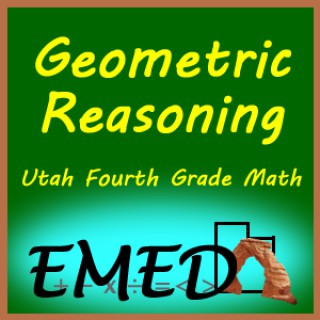
Geometric Reasoning
Follow Geometric ReasoningThis is a feed of pages for Geometric Reasoning
- May 17, 2011 LATEST EPISODE
- infrequent NEW EPISODES
- 20 EPISODES
More podcasts from EMED
Latest episodes from Geometric Reasoning

a. Identify a translation, rotation, or a reflection of a geometric shape.

b. Recognize that 90°, 180°, 270°, and 360° are associated, respectively, with 1/4, 1/2, 3/4, and full turns.

b. Identify and describe right, acute, obtuse, and straight angles.

d. Identify and describe figures that have line symmetry and rotational symmetry.

b. Identify and describe right, acute, obtuse, and straight angles.

a. Identify a translation, rotation, or a reflection of a geometric shape.

a. Identify a translation, rotation, or a reflection of a geometric shape.

a. Identify and describe the radius and diameter of a circle.

a. Identify and describe the radius and diameter of a circle.

b. Identify and describe right, acute, obtuse, and straight angles.

b. Identify and describe right, acute, obtuse, and straight angles.

a. Name and describe lines that are parallel, perpendicular, and intersecting.

d. Identify and describe figures that have line symmetry and rotational symmetry.

d. Give the regions of a position on a map of Utah.

a. Name and describe lines that are parallel, perpendicular, and intersecting.

c. Identify and describe the radius and diameter of a circle.

a. Locate coordinates in the first quadrant of a coordinate grid. b. Give the coordinates in the first quadrant of a coordinate grid.

a. Name and describe lines that are parallel, perpendicular, and intersecting.

a. Locate coordinates in the first quadrant of a coordinate grid. b. Give the coordinates in the first quadrant of a coordinate grid.

a. Locate coordinates in the first quadrant of a coordinate grid. b. Give the coordinates in the first quadrant of a coordinate grid.












